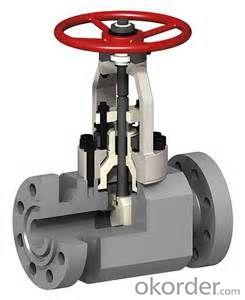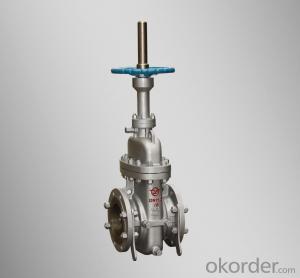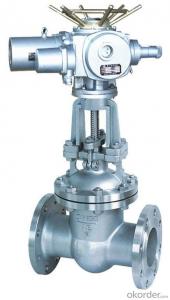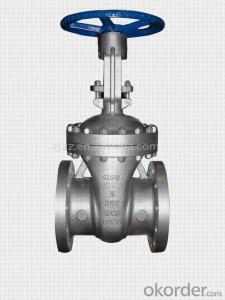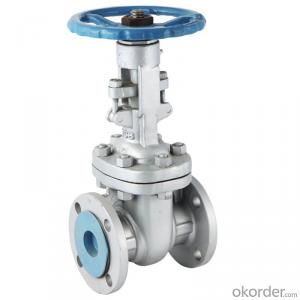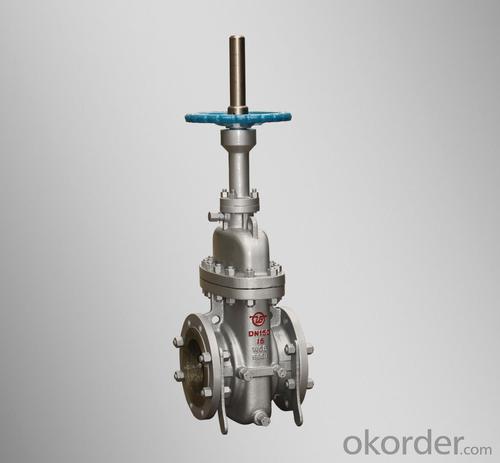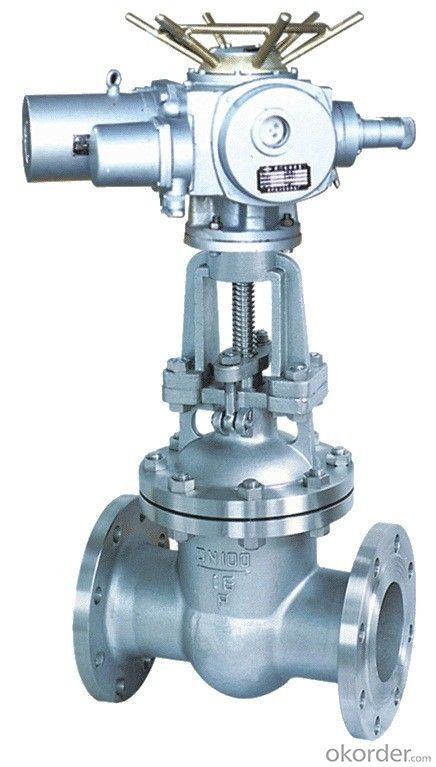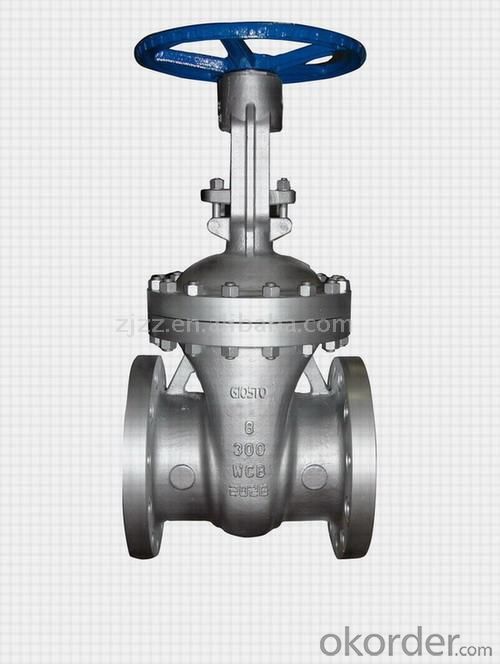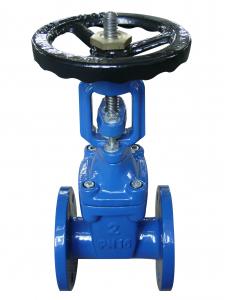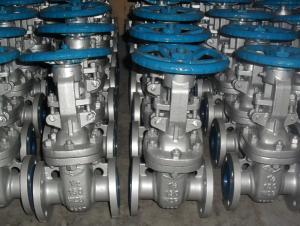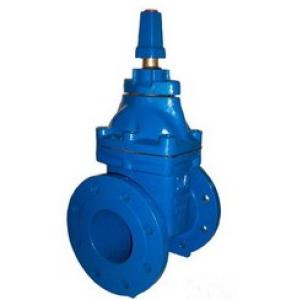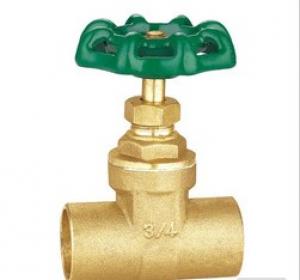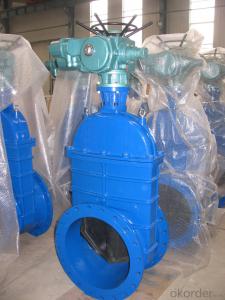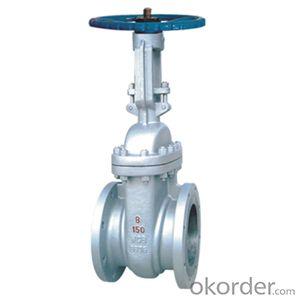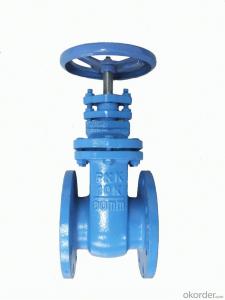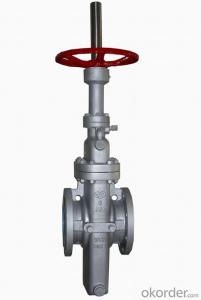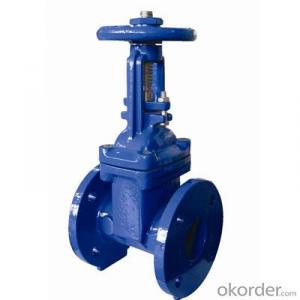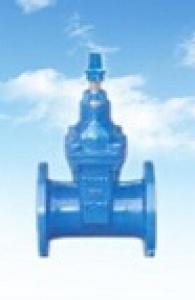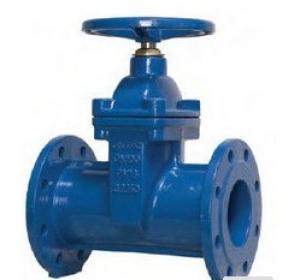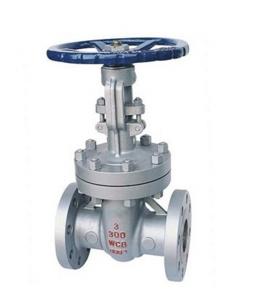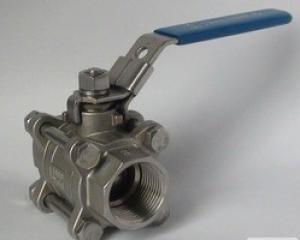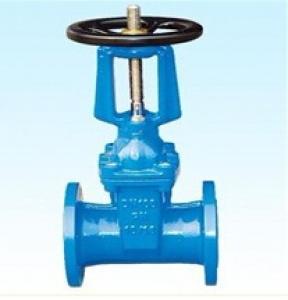Gate Valve of Non-rising Stem Good Quality from China
- Loading Port:
- Tianjin
- Payment Terms:
- TT OR LC
- Min Order Qty:
- 100 pc
- Supply Capability:
- 10000 pc/month
OKorder Service Pledge
OKorder Financial Service
You Might Also Like
1.Structure of Gate Valve Description:
A gate valve, also known as a sluice valve, is a valve that opens by lifting a round or rectangular gate/wedge out of the path of the fluid. The distinct feature of a gate valve is the sealing surfaces between the gate and seats are planar, so gate valves are often used when a straight-line flow of fluid and minimum restriction is desired. The gate faces can form a wedge shape or they can be parallel. Gate valves are primarily used to permit or prevent the flow of liquids, but typical gate valves shouldn't be used for regulating flow, unless they are specifically designed for that purpose. Because of their ability to cut through liquids, gate valves are often used in the petroleum industry. For extremely thick fluids, a specialty valve often known as a knife valve is used to cut through the liquid. On opening the gate valve, the flow path is enlarged in a highly nonlinear manner with respect to percent of opening. This means that flow rate does not change evenly with stem travel. Also, a partially open gate disk tends to vibrate from the fluid flow. Most of the flow change occurs near shutoff with a relatively high fluid velocity causing disk and seat wear and eventual leakage if used to regulate flow. Typical gate valves are designed to be fully opened or closed.When fully open, the typical gate valve has no obstruction in the flow path, resulting in very low friction loss.
2. Main Features of the Gate Valve:
• Valve body cavity using non-toxic epoxy resin,both inside and outside flashboard completely is coated with rubber
• Free of water pollution
• High manufacturing accuracy
• High strength
• Environmental protection and energy saving
• Good visual effect
3. Images
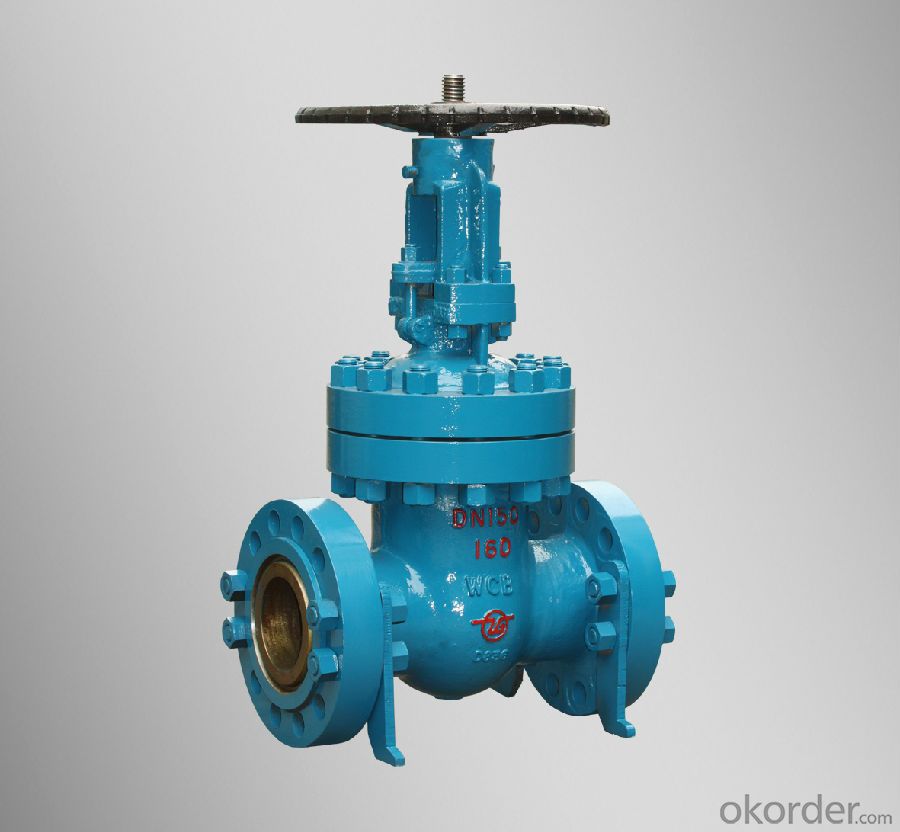
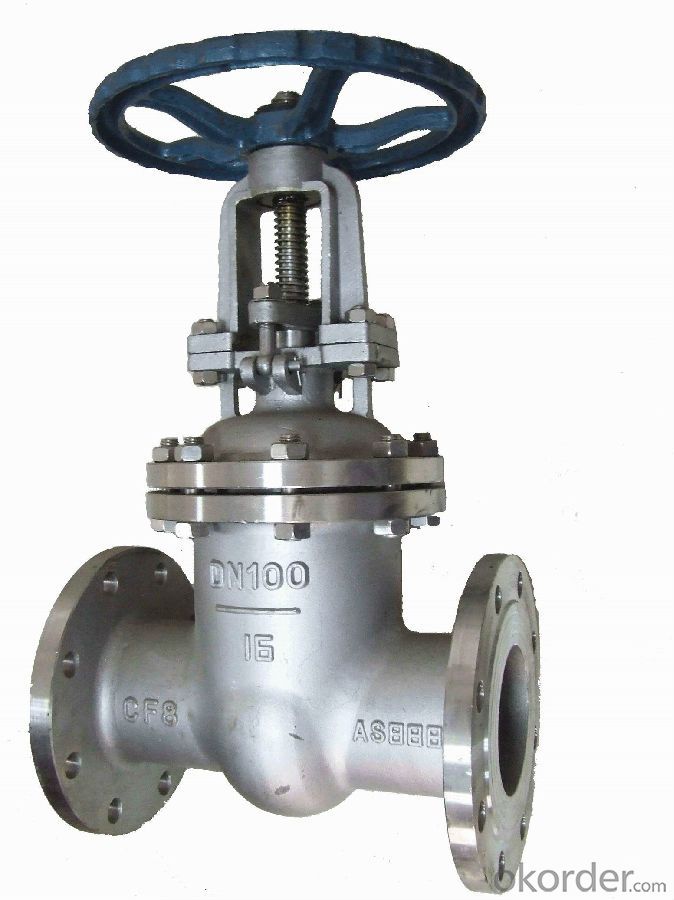
4. Gate valve Specification

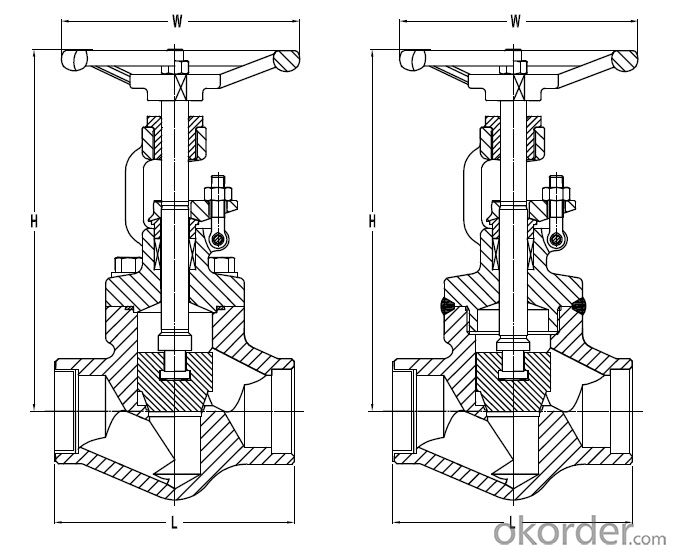
5.FAQ
1. What's are the characteristics of gate valve?
The distinct feature of a gate valve is the sealing surfaces between the gate and seats are planar, so gate valves are often used when a straight-line flow of fluid and minimum restriction is desired. The gate faces can form a wedge shape or they can be parallel.
2. What is the work principle of gate valve ?
The gate faces can form a wedge shape or they can be parallel. Gate valves are primarily used to permit or prevent the flow of liquids, but typical gate valves shouldn't be used for regulating flow, unless they are specifically designed for that purpose. Because of their ability to cut through liquids, gate valves are often used in the petroleum industry.
3. What is the structure?
Bonnets provide leakproof closure for the valve body. Gate valves may have a screw-in, union, or bolted bonnet. Screw-in bonnet is the simplest, offering a durable, pressure-tight seal. Union bonnet is suitable for applications requiring frequent inspection and cleaning. It also gives the body added strength. Bolted bonnet is used for larger valves and higher pressure applications.
- Q: What are the advantages and disadvantages of flat gate valves?
- The advantage of flat gate valve is that the flow resistance is small, and the flow resistance is similar to the flow resistance of short valve. The flat gate valve with guide hole is installed on the pipeline and can be directly cleaned with the cleaner. As the gate is sliding on the two seat surface, the flat gate valve can be applied to the medium with suspended particles, and the sealing surface of the flat gate valve is actually positioned automatically. The seat seal surface is not subject to thermal deformation of the valve body. Moreover, even if the valve is closed in cold condition, the thermal elongation of the stem will not cause the seal to be subjected to overload. The length of the structure is much shorter than that of the ball valve, and it is easier to start. Light plate gate valve is more refined, but the effect is exactly the same.The disadvantage of flat gate valve is that when the medium pressure is low, the sealing force of the metal sealing surface is insufficient, so as to achieve satisfactory sealing. On the contrary, when the medium pressure is high, if the sealing surface is not lubricated by the system media or foreign media, often opening and closing may cause the sealing surface to wear too much. Another disadvantage is that the circular motion of the circular gate in the circular flow, only when it is at the valve closed position of 50%, this valve is more sensitive to flow control. Moreover, the gate will produce severe vibration when it breaks the high-speed and dense medium flow. The valve seat can also be throttled if the seat is made of a V - shaped opening and is tightly oriented to the gate.
- Q: What is the difference between the model z81x-16q and z81x-16c of the groove gate valve?
- Not 16qIs 16p, the former body is stainless steel, and the latter body is carbon steel
- Q: What is gate valve (with force transfer joint)?
- The force transfer joint is mainly used for the loose connection of pumps, valves and other accessories.
- Q: Analysis of the advantages of elastic seat sealing gate valve?
- Most of the valve is forced seal, that is, when the valve closed, to rely on external force to force the gate to the seat, in order to ensure the sealing surface sealing.When opening the gate valve, when the gate lift height is equal to 1:1 times of the gate diameter, the passage of the fluid is completely unblocked, but at run time, this position is unable to monitor. In actual use, the top of the stem is used as a sign, i.e., the open position, as its fully open position. Temperature changes appear to consider locking phenomenon, usually open to the vertex position, and then rewind 1/2-1 circle, as a fully open valve position. Therefore, the opening position of the gate valve is determined by the position of the gate (i.e. the stroke). The sealing surface is easy to wear and tear, affecting the service life. When opening and closing, gate and valve seat two sealing surface friction, sliding, to medium pressure under the action of easy to produce abrasions, wear, affect sealing performance, shorten service life.
- Q: Does the tap belong to a stop valve or a gate valve?
- Most taps are stop valves:1, gate valve (gate valve) is a headstock ram, RAM direction of motion perpendicular to the direction of the fluid, valve can only be fully open and fully closed doors, discomfort pumpsparameters vary, usually 5 degrees is not high, medium temperature is 2 degrees 52'. To improve its manufacturability, make up for the deviation of the angle of the sealing surface during processing. This gate is called an elastic ram.2, valve (stop, Globe, Valve) of the opening and closing parts are plug shaped valve, sealing surface is flat or sea cone, the valve along the center line of the valve seat in a straight line movement. Stem form of exercise (generic name: dark bar), but also lift rotating rod can be used to control air, water, steam, all kinds of corrosive media, mud, oil, metals and radioactive liquid media and other types of fluid flow. Therefore, this type of shut-off valve is very suitable for cutting or regulating and throttling. Because of the valve stem to open or close the trip is relatively short, but very reliable cut off function, and because changes in the valve seat and the valve stroke is proportional, is very suitable for flow regulation.The stop valve is an ascending stem type, and the handwheel rotates and rises along with the stem. Valve is hand wheel rotation, stem upward movement. Flow is not the same, the gate valve requires full open, the cut-off valve is not the same. The gate valve has no inlet and outlet direction requirements, and the cut-off valve has the required inlet and outlet!
- Q: Will the water supply and drainage to wear civil air defense gate valve, the use of bright rod or dark rod?
- 2, soft sealing gate valve at the bottom of the pit. No accumulation of slag material, valve opening and closing of the failure rate is low;
- Q: Internal screw current limiting gate valve (Tan Gang) PN5.0 DN15/ Phi 1 Rc1/2 what does that mean?
- We did thatInternal thread current limiting gate valve (Tan Gang)Body material: carbon steelPressure rating: PN5.0 = 300LB American StandardNominal = DN15 = 1/2"Phi 1 = in the middle of the gate drilling a Phi 1 hole, so that in closing there will be a certain flow, that is, the minimum flow, that is, the current limit.Rc1/2 is thread, which is the connection
- Q: What is the difference between gate valve Z41T and Z45T?
- Valve Z41T and Z45T difference is that "41" is dark rod, that is, the screw is not out of the turbine,"45" is the bright rod, that is, the screw out of the turbine.Common points are copper sealed gate valves.
- Q: What gate valve is the J41H-150LBDN100 gate valve?
- This is a stop valve, not a gate valve.Gate valve means Z41H-150LB-DN100Wenzhou shintex Valve Manufacturing Co. Ltd.0577Eight thousand six hundred and ninety-oneSeven thousand five hundred and sixteenCall
- Q: Gate valve z41t what does that mean?
- According to the provisions of the JB/T 308-2004 valve type programming method:Z = gate valve4 = connection form: flangeT = sealing surface material: copper alloy
Send your message to us
Gate Valve of Non-rising Stem Good Quality from China
- Loading Port:
- Tianjin
- Payment Terms:
- TT OR LC
- Min Order Qty:
- 100 pc
- Supply Capability:
- 10000 pc/month
OKorder Service Pledge
OKorder Financial Service
Similar products
Hot products
Hot Searches
Related keywords
